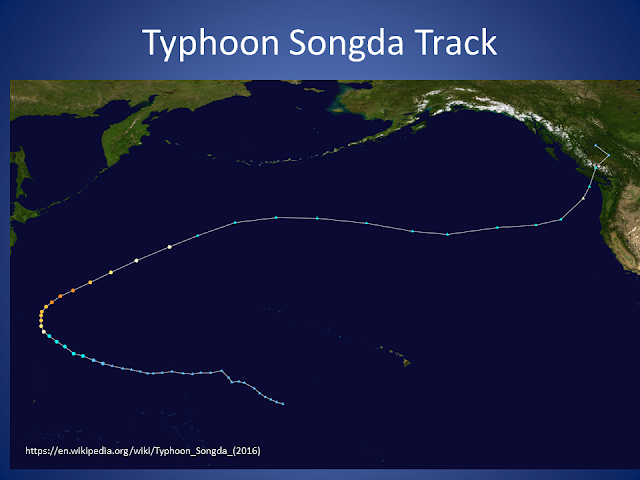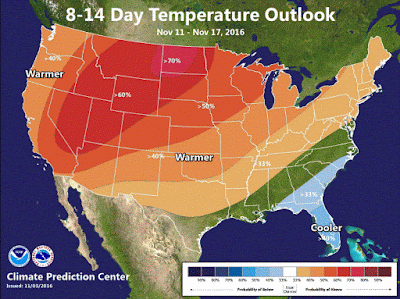So, what are the models showing? They all show (except the Canadian model as of Friday night) an active northwest flow pattern with multiple storms tracking through beginning as early as Tuesday night and continuing through the holiday weekend.
Let's begin with the first system, arriving Tuesday night into Wednesday. Keep in mind that Wednesday is one of the busiest travel days of the year.
Tuesday night/Wednesday:
 |
| Nov 19th/00z GFS model forecast of 500mb heights and 700-500mb RH 12z Wed (4 AM PST Wednesday, Nov 23rd) |
This is the weakest of the incoming storms but will still likely produce accumulating snow over the mountain passes as it tracks through. Valley snow (mainly above 2000 feet) is also possible depending on timing. A morning arrival during the coldest part of the day would be more favorable for this. Here is what the University of Washington WRF-GFS is showing.
 |
| Nov 19th/00z UW WRF-GFS 24 hour snow accumulation ending 4 PM Wednesday |
This suggest the potential for 2-4 inches of snow Tuesday night into Wednesday in the mountains, and possibly light accumulations for the northern valleys as well. Keep in mind this is still several days out so precise locations and amounts will probably change in the models between now and then.
Thursday (Thanksgiving):
 |
| Nov 19th/00z GFS model forecast of 500mb heights and 700-500mb RH 18z Thu (10 AM PST Thursday, Nov 24th) |
Friday:
 |
| Nov 19th/00z GFS model forecast of 500mb heights and 700-500mb RH 18z Fri (10 AM PST Friday, Nov 25th) |
Saturday:
 |
| Nov 19th/00z GFS model forecast of 500mb heights and 700-500mb RH 12z Sat (4 AM PST Saturday, Nov 26th) |
Sunday:
 |
| Nov 19th/00z GFS model forecast of 500mb heights and 700-500mb RH 18z Sat (10 AM PST Sunday, Nov 27th) |
The storm moves inland and thus the pattern remains unsettled.
Now keep in mind the model forecasts are still several days out and usually don't get the precise timing and strength details correct this far out into the forecast. The main message is that the pattern looks very active for the Thanksgiving Holiday weekend and travel impacts are a high possibility. So keep informed of the latest forecasts before traveling this Thanksgiving. The upcoming pattern looks very good for the ski resorts.
























